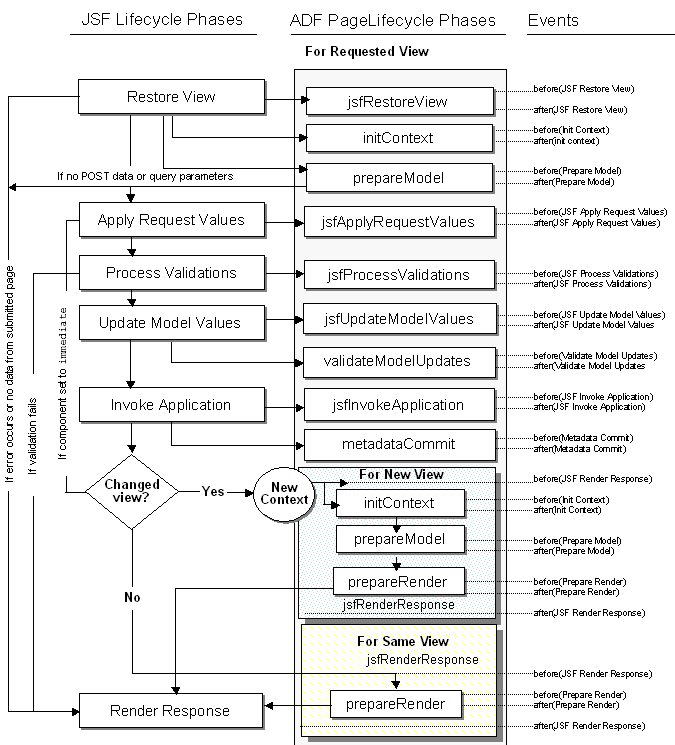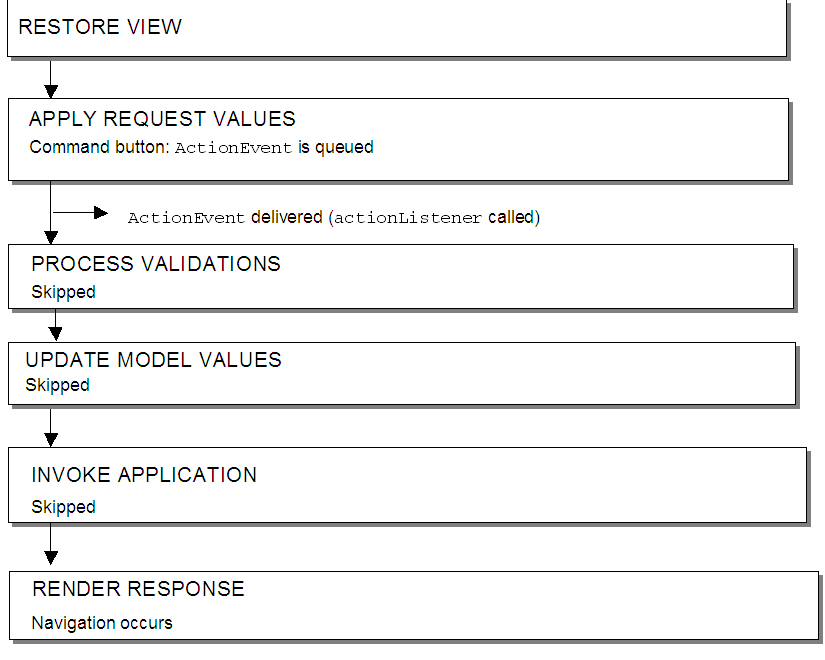1.Below installation tested on Windows7 Ultimate, 32 bit, 3GB RAM
Weblogic Server 11g(10.3.5)
Forms and Reports Server 11g(11.1.2)
Oracle Enterprise Pack for Eclipse(11.1.1.7)
2.Download files from below location.(Login to http://www.oracle.com/)
#wls1035_oepe111172_win32.exe
Link: http://download.oracle.com/otn/nt/middleware/11g/wls/1035/wls1035_oepe111172_win32.exe?AuthParam=1411119662_8b9496fcbef19a07ca48ae945021306c
#ofm_frmrpts_win_11.1.2.0.0_32_disk1_1of1.zip
Link: http://download.oracle.com/otn/nt/middleware/11g/111200/ofm_frmrpts_win_11.1.2.0.0_32_disk1_1of1.zip?AuthParam=1411124435_ea027c60bc5c8ba6727bad23f0c15175
#Patch: 6880880-OPatch Update
File:p6880880_111000_WINNT.zip (http://support.oracle.com)
#Patch: 17448420-Java Security Issue(Old Manifest file in jars)
File:p17448420_111200_Generic.zip (http://support.oracle.com)
3.Follow below link to install Weblogic Server
http://www.oracle-base.com/articles/11g/oracle-weblogic-server-11gr1-1035-installation-on-windows.php
4.Restart your machine and make sure that weblogic server is not in running status.
Simple check: http://localhost:7001/console should not open login page. (Replace localhost with your hostname)
5.Follow below steps to install Forms and Reports Classic 11g Home1.
Extract ofm_frmrpts_win_11.1.2.0.0_32_disk1_1of1.zip file into stage directory.
Open directory Disk1 and double click on setup.exe file.
6.Follow below steps to configure Forms and Report Development Enviroment.(if required)
Go to Start>Programs>OracleClassic11g-Home1>Configure Classic Instance.
7.Follow below steps to configure forms and report servers in existing weblogic server.
Go to Start>Programs>OracleClassic11g-Home1>Configure Classic Instance.
8.Your programs should look like this once all installations are done successfully.
9.Apply below patch to get latest version of OPatch. Enter correct version(in this case 11.1.1) when download the patch from metalink. After download, you need to copy OPatch folder from extracted directory and place it/override existing middleware OPatch folder. Take backup of existing OPatch folder.
Patch: 6880880 -OPatch Update
File:p6880880_111000_WINNT.zip
10.Apply below patch to override Java Security issues(Old Manifest file in jars). Download file from oracle metalink. Enter correct version(in this case 11.1.2) when download the patch from metalink.
Patch: 17448420 - Java Security Issue
File:p17448420_111200_Generic.zip
11.Check below links to confirm all servers are up and running status.
http://localhost:7001/console
http://localhost:9001/forms/frmservlet
http://localhost:9002/reports/rptservlet
if servers are not in running status then follow below order to start severs from Start>Programs>Oracle Classic Instance-asinst2
Start Weblogic Admin Server
Start Weblogic Server-WLS_FORMS
Start Weblogic Server-WLS-REPORTS
12.Create sample form using Forms Builder11g and compile. Copy .fmx file into any location on your drive(Should not have any spaces in the path).
13.Open Enterprise Manager Console(em)
http://localhost:7001/em
14.Click on "Forms" section from left side panel, click "Web Configuration" link to see configured applications details.
15.Create new Section by clicking on "Create" button and enter some name. This is the config name of your application. Enter Form field value as full path of your .fmx file. Including file name and extension. Leave remaining fields as it is. Apply changes.
16.Now open your form and test it.
http://localhost:8888/forms/frmservlet?config= [enter application config name]
Weblogic Server 11g(10.3.5)
Forms and Reports Server 11g(11.1.2)
Oracle Enterprise Pack for Eclipse(11.1.1.7)
2.Download files from below location.(Login to http://www.oracle.com/)
#wls1035_oepe111172_win32.exe
Link: http://download.oracle.com/otn/nt/middleware/11g/wls/1035/wls1035_oepe111172_win32.exe?AuthParam=1411119662_8b9496fcbef19a07ca48ae945021306c
#ofm_frmrpts_win_11.1.2.0.0_32_disk1_1of1.zip
Link: http://download.oracle.com/otn/nt/middleware/11g/111200/ofm_frmrpts_win_11.1.2.0.0_32_disk1_1of1.zip?AuthParam=1411124435_ea027c60bc5c8ba6727bad23f0c15175
#Patch: 6880880-OPatch Update
File:p6880880_111000_WINNT.zip (http://support.oracle.com)
#Patch: 17448420-Java Security Issue(Old Manifest file in jars)
File:p17448420_111200_Generic.zip (http://support.oracle.com)
3.Follow below link to install Weblogic Server
http://www.oracle-base.com/articles/11g/oracle-weblogic-server-11gr1-1035-installation-on-windows.php
4.Restart your machine and make sure that weblogic server is not in running status.
Simple check: http://localhost:7001/console should not open login page. (Replace localhost with your hostname)
5.Follow below steps to install Forms and Reports Classic 11g Home1.
Extract ofm_frmrpts_win_11.1.2.0.0_32_disk1_1of1.zip file into stage directory.
Open directory Disk1 and double click on setup.exe file.
6.Follow below steps to configure Forms and Report Development Enviroment.(if required)
Go to Start>Programs>OracleClassic11g-Home1>Configure Classic Instance.
Go to Start>Programs>OracleClassic11g-Home1>Configure Classic Instance.
8.Your programs should look like this once all installations are done successfully.
9.Apply below patch to get latest version of OPatch. Enter correct version(in this case 11.1.1) when download the patch from metalink. After download, you need to copy OPatch folder from extracted directory and place it/override existing middleware OPatch folder. Take backup of existing OPatch folder.
Patch: 6880880 -OPatch Update
File:p6880880_111000_WINNT.zip
10.Apply below patch to override Java Security issues(Old Manifest file in jars). Download file from oracle metalink. Enter correct version(in this case 11.1.2) when download the patch from metalink.
Patch: 17448420 - Java Security Issue
File:p17448420_111200_Generic.zip
11.Check below links to confirm all servers are up and running status.
http://localhost:7001/console
http://localhost:9001/forms/frmservlet
http://localhost:9002/reports/rptservlet
if servers are not in running status then follow below order to start severs from Start>Programs>Oracle Classic Instance-asinst2
Start Weblogic Admin Server
Start Weblogic Server-WLS_FORMS
Start Weblogic Server-WLS-REPORTS
12.Create sample form using Forms Builder11g and compile. Copy .fmx file into any location on your drive(Should not have any spaces in the path).
13.Open Enterprise Manager Console(em)
http://localhost:7001/em
14.Click on "Forms" section from left side panel, click "Web Configuration" link to see configured applications details.
15.Create new Section by clicking on "Create" button and enter some name. This is the config name of your application. Enter Form field value as full path of your .fmx file. Including file name and extension. Leave remaining fields as it is. Apply changes.
16.Now open your form and test it.
http://localhost:8888/forms/frmservlet?config=












































